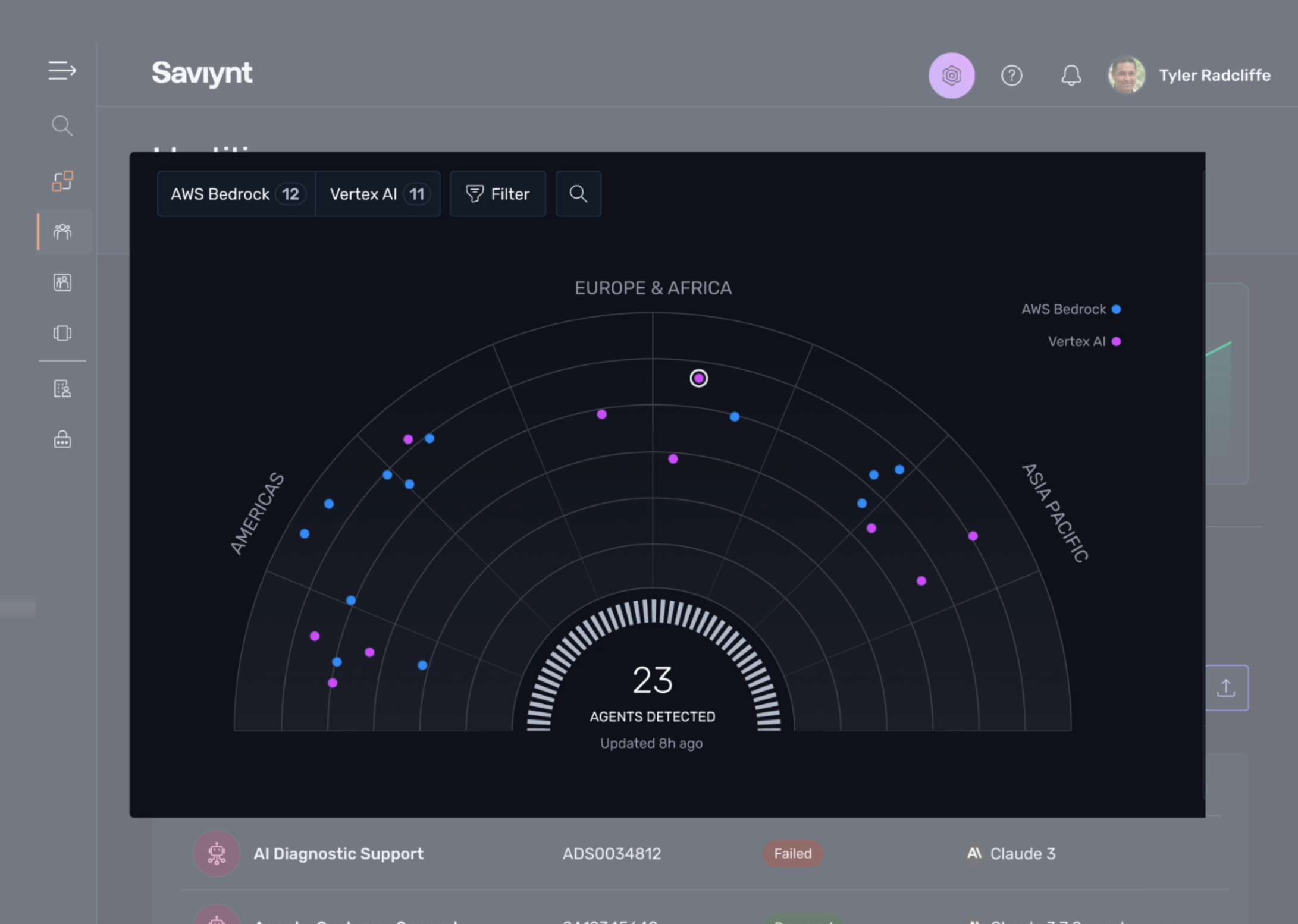.png?noresize&width=3388&height=1804&name=ISPM%20for%20AI%20Identity_Dashboard_Findings%20(1).png)

Achieve a clear understanding of agent security posture through a detailed inventory, access profiles, and risk insights.
Discovery and risk insights
Automatically discover agents and their associated identities and deliver detailed risk insights to accelerate investigation and remediation.
Access paths
Visualize how your AI agents connect with LLMs, MCP servers, knowledge bases, and other resources.
Timeline view
Track every AI agent change in a timeline with a clear summary of each change.

Learn how Saviynt is embracing and securing today’s AI landscape.

Proactively identify access risks and stay audit-readiness for all identities, including humans, machines, MCP servers, AI agents, and more.
-1.jpg?noresize&width=327&height=177&name=ISPM%20Main%20Dashboard%20Squared%20(2)-1.jpg)


An AI agent isn’t defined by a single identity — it’s composed of many. Each brings its own access patterns, lifecycle requirements, and security risks. These identities can consume sensitive data, initiate actions, and operate autonomously.
With AI, enterprises must now account for new classes of identities: